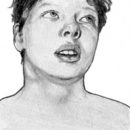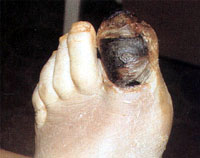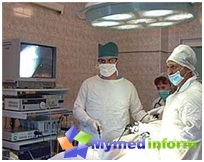What is sepsis newborns? What are the symptoms of sepsis of newborns? How treatment and prevention of sepsis of newborns is carried out? Answers to these questions you will find in the article.
Content
Sepsis newborns
Sepsis newborn or neonatal sepsis - general
Infectious disease, accompanied by bacteremia (bacteria from the hearth
infections fall into blood). Infection of the newborn baby can
happen: in the antenatal (before delivery), in intranatal (at the time of birth) and in postnatal
(after childbirth) periods. Most susceptible to such a disease premature
children. The topic of sepsis of newborns does not lose its relevance throughout
long time because the percentage of lethal outcomes of this
Diseases.

Causative agents can be various pathogenic and
Conditional pathogenic microorganisms: staphylococcus, streptococcus, pneumococcus,
salmonella, intestinal wand, cynical wand and a number of other dangerous for
man microorganisms. Availability
purulent and inflammatory processes in the mother, long anhydrous period,
damage to the skin during the birth period - all this can be a focus of infection
Newborn baby. Bacteria and viruses can penetrate the body
through mucous membranes, respiratory
Paths and gastrointestinal tract, as well as leakage of skin, umbilical wound
and poucher vessels. If sepsis has an interpecological origin, then the focus
Infections is in the human body (placenta or any organ).
Distinguish three main clinical forms of sepsis
Newborn: early, late and intrabolic sepsis.
Early Sepsis detect in the first 5-7 days of life, most often
children are infected perinatal, that is, in the womb. Pathogenic
Microorganisms enter the body of a child transplantary (through a placenta).
Also, the development of early sepsis is possible due to the swallowing of the spindle
waters or due to the rupture of the arrogant shell in which he penetrates
Pathogenic vaginal microflora. Also infection is possible at the stage
passing the child of the birthway, especially if there are foci
Inflammation.
Late Sepsis detect 2-3 weeks after birth,
infection most often happens during the passage of the child
paths, microflora vagina mother.
Intrabolician sepsis is caused by pathogenic microflora,
which meets in hospitals and maternity hospitals, most often the causative agent of this
Sepsis becomes Staphylococcus, (especially Staphylococcus Epidermidis),
Commotectant sticks (including Pseudomonas, Klebsiella, Serratia, Proteus)
and mushrooms. The immune system of the newborn is not yet prepared for such an active
The effects of pathogenic microorganisms, mucous and skin are easy
vulnerable, as a result of which the risk of sepsis is significantly increased.
Symptoms of sepsis newborns
Most often, sepsis manifests itself through the following symptoms:
Reduced appetite, breast failure, frequent jumping, vomiting, grayish tint
skin, body temperature increase, significant body weight drop, bias
nasolabial triangle, poor healing of the umbilical wound («weeping» navel).
Sepsis can flow in two forms: septicemia (general
Incixing of the body, without pronounced foci of infection) and septicopemia
(Presence of expressly pronounced foci of inflammation: abscess, phlegmon, pneumonia,
Meningitis, Osteomyelitis and DR.)
Sepsis may be lightning, the first 3-7 days occurs
life is accompanied by septic shock, ends, mostly fatal
Exodus. The acute stage of sepsis lasts 4-8 weeks, the tighten stage of sepsis can
lasting more than two or three months (most often occurs in newborns with
immunodeficiency).
Treatment of sepsis newborns
Infected children are subject to mandatory hospitalization in
Specialized branches of the pathology of newborns. Treatment is carried out
Antibacterial preparations of a wide range of action: semi-synthetic
Penicillin, ampicillin sodium salt, ampiox, chapel, lincomycin hydrochloride, gentamicin
Sulfate and other. Antibiotics are more often used in the form of intramuscular injections, and
With the unfavorable course of sepsis and threatened states - intravenously.
The course of antibiotics usually lasts 7-14 days, long-term
the course of the disease, as well as the wave-like and protracted flow requires
Repeat the course of antibiotics or carrying out several courses of antibiotics.
And various antibiotics are prescribed for each course, repetitions
avoid.
Treatment continues to achieve persistent therapeutic
Effect.
Prevention of sepsis
Since sepsis is a serious illness that
Most cases lead to death, a whole range is carried out
Preventive Mer. This: observation during pregnancy from specialists,
Timely diagnosis and identification of diseases and infections in pregnant
women.









